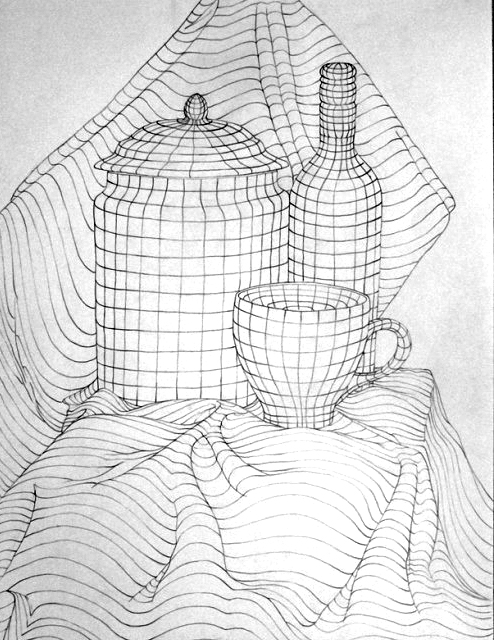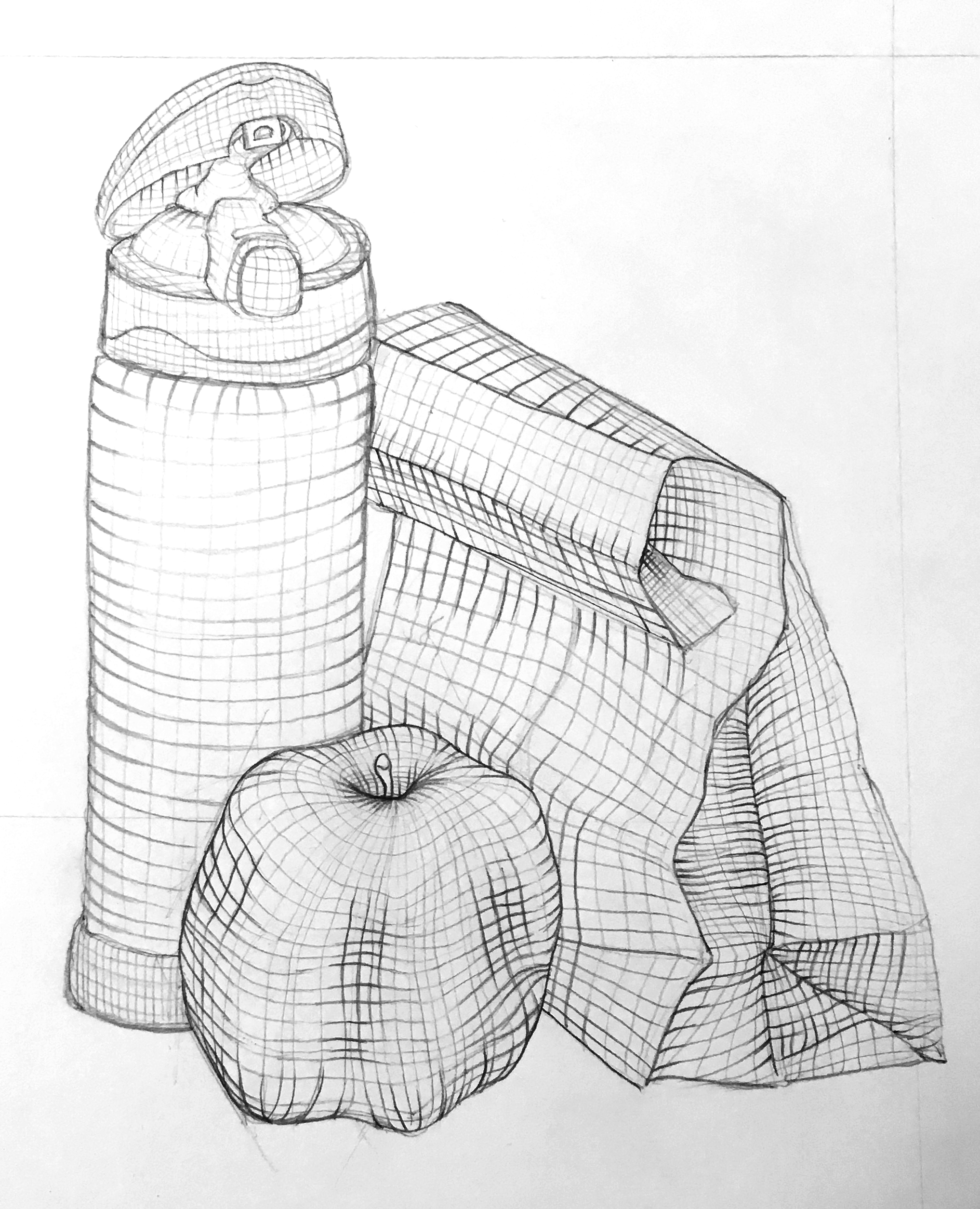Still Life Contour and cross-contour Still Life

Let's pick up our sketchbooks and put these cross-contour concepts into practice.
Activity: Contour and Cross-Contour Line Still Life
Objective:
Create a still-life drawing using both contour and cross-contour lines to enhance your focus, observation, and line control, while learning to represent objects in terms of their edges, shapes, and forms.
Materials:
- Pencils (preferably HB for outlining and softer pencils like 2B for inside line)
- Erasers
- sketchbooks
Instructions:
Choose your objects: Select a few items from the classroom, such as a vase, apple, books, or other available objects. Arrange them in an interesting way to create a still-life composition.
Start with Contour Lines:
- Begin by outlining the edges of the objects using contour lines. These lines should trace the outline of the objects, focusing on their shape and visible edges.
- Keep your eyes on the objects and avoid looking at your paper as much as possible to improve your observation skills.
Add Cross-Contour Lines:
- Once you’ve completed the contour outlines, add cross-contour lines. These lines follow the curves and planes of the objects, wrapping around them to show depth and form.
- Cross-contour lines are drawn perpendicular to the contour lines, helping create the illusion of 3D space on your 2D surface.
Focus on the relationships between lines: As you add cross-contours, think about how the lines interact with each other to describe the form of the objects. Be mindful of the curvature and perspective.
Take your time: The goal is to practice using both types of lines effectively. Work slowly, focusing on accuracy and control.
Review and reflect: Once your drawing is finished, step back and observe how the contour and cross-contour lines work together to give the objects structure and depth.

Goal:
This activity will help you develop a strong understanding of how to represent objects with simple lines, building a foundation for more complex techniques. You'll improve your ability to observe and portray both the shapes (contour) and the volume (cross-contour) of objects.